
How to Use Solar Power Management Module, for 6V~24V Solar Panel: Examples, Pinouts, and Specs
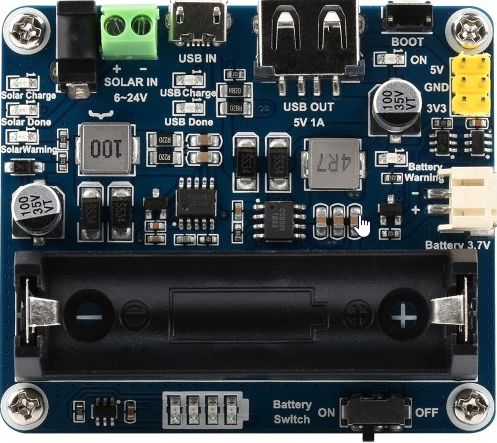
 Design with Solar Power Management Module, for 6V~24V Solar Panel in Cirkit Designer
Design with Solar Power Management Module, for 6V~24V Solar Panel in Cirkit DesignerIntroduction
The Waveshare Solar Power Manager is a versatile device designed to optimize the performance of solar panels by regulating voltage and current. It ensures efficient energy conversion and storage for systems operating within a voltage range of 6V to 24V. This module is ideal for renewable energy projects, enabling seamless integration of solar power into electronic systems.
Explore Projects Built with Solar Power Management Module, for 6V~24V Solar Panel
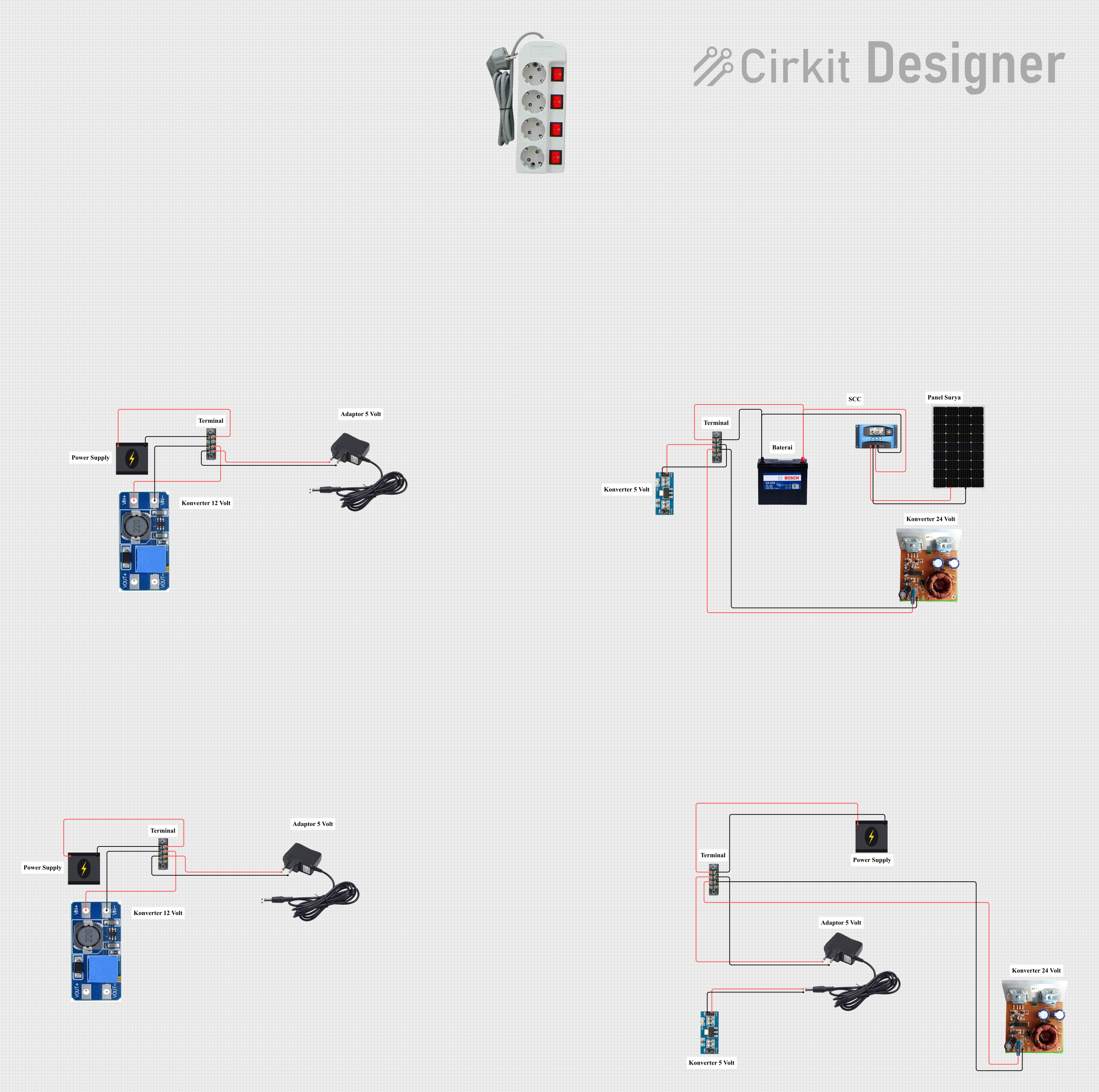
 Open Project in Cirkit Designer
Open Project in Cirkit Designer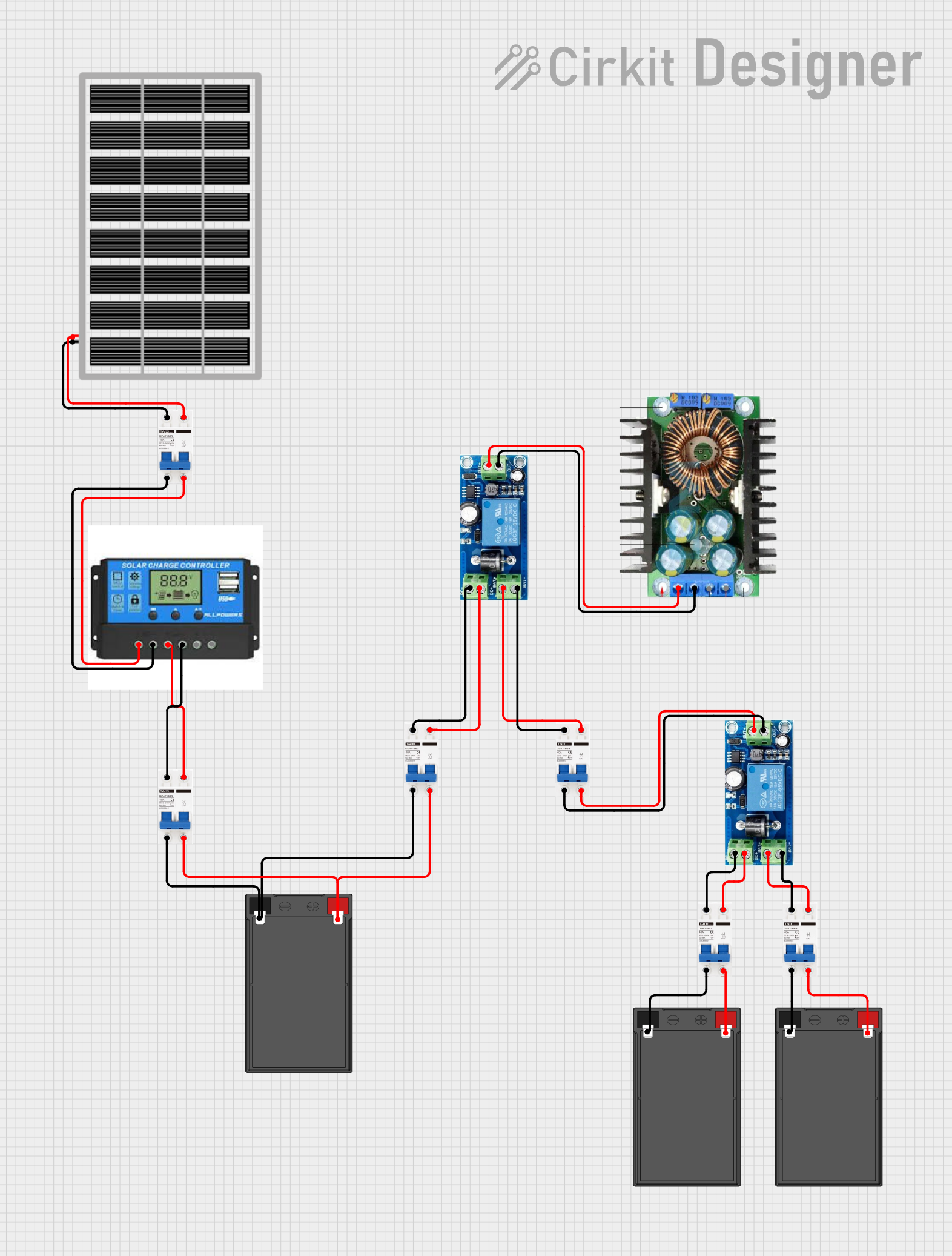
 Open Project in Cirkit Designer
Open Project in Cirkit Designer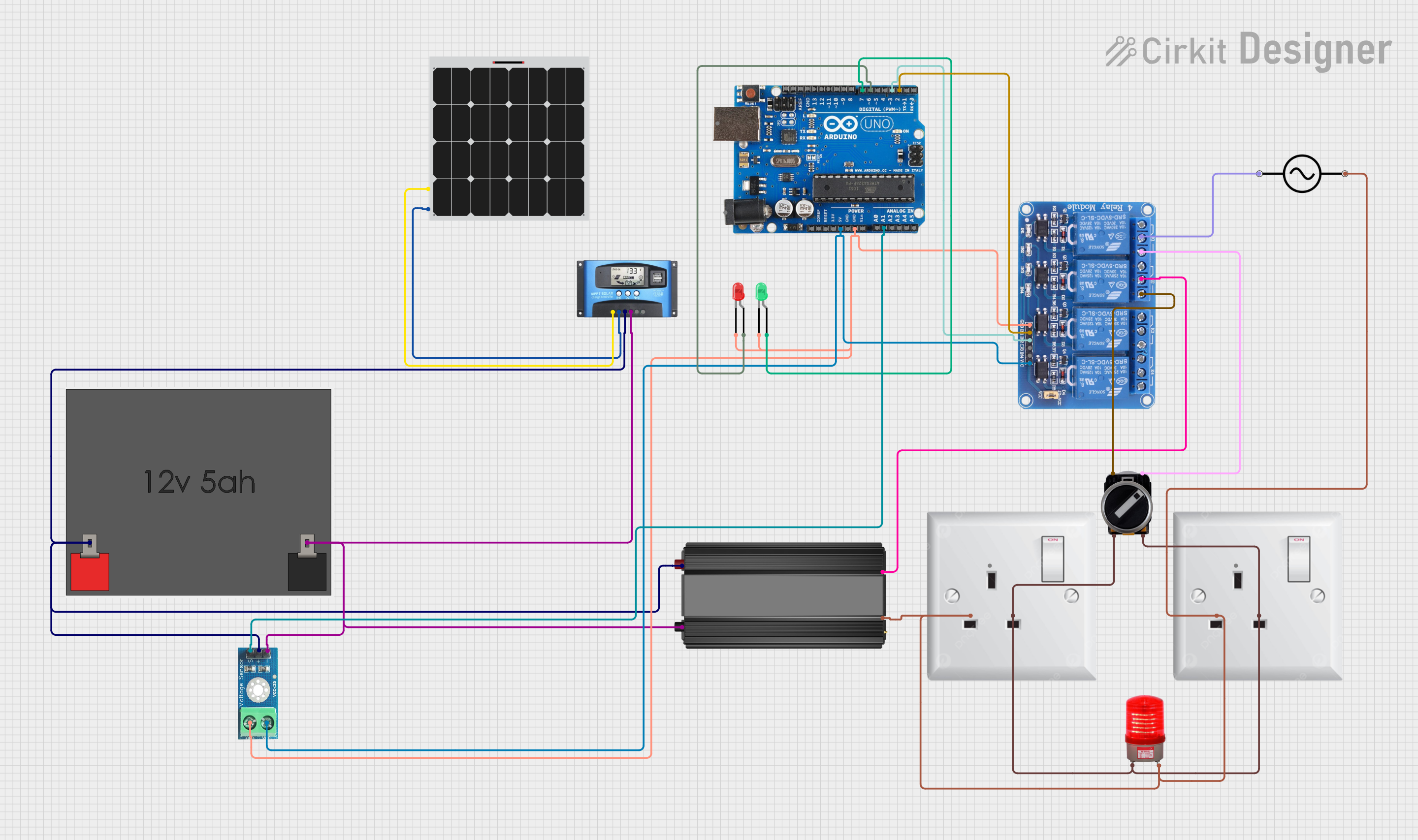
 Open Project in Cirkit Designer
Open Project in Cirkit Designer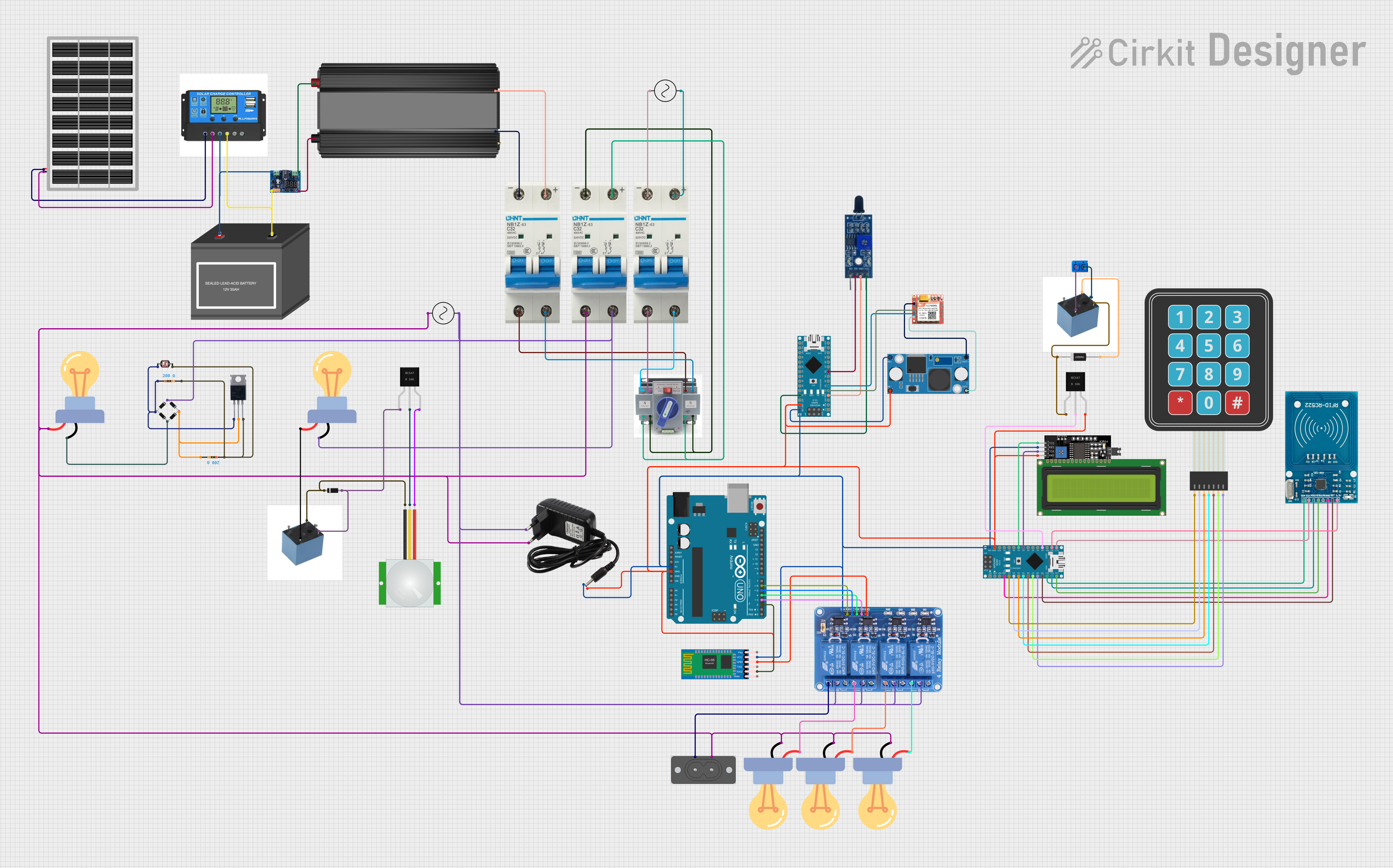
 Open Project in Cirkit Designer
Open Project in Cirkit DesignerExplore Projects Built with Solar Power Management Module, for 6V~24V Solar Panel

 Open Project in Cirkit Designer
Open Project in Cirkit Designer
 Open Project in Cirkit Designer
Open Project in Cirkit Designer
 Open Project in Cirkit Designer
Open Project in Cirkit Designer
 Open Project in Cirkit Designer
Open Project in Cirkit DesignerCommon Applications and Use Cases
- Solar-powered IoT devices
- Off-grid renewable energy systems
- Battery charging and management for solar setups
- Low-power outdoor monitoring systems
- Educational projects involving solar energy
Technical Specifications
The following table outlines the key technical details of the Solar Power Manager:
| Parameter | Value |
|---|---|
| Input Voltage Range | 6V to 24V |
| Output Voltage (USB) | 5V ± 0.1V |
| Output Current (USB) | Up to 2.5A |
| Battery Charging Voltage | 4.2V |
| Battery Charging Current | 1A (default, adjustable) |
| Efficiency | Up to 96% |
| Operating Temperature | -40°C to 85°C |
| Dimensions | 65mm × 56mm |
Pin Configuration and Descriptions
The module features several input/output pins and connectors for solar panels, batteries, and load devices. Below is the pin configuration:
| Pin/Connector | Description |
|---|---|
| SOLAR IN | Input for the solar panel (6V to 24V). |
| BAT IN | Connection for a rechargeable battery (e.g., Li-ion or LiPo). |
| USB OUT | 5V regulated output for powering USB devices. |
| LOAD OUT | Output for powering external devices directly from the battery or solar panel. |
| CHG LED | Indicates battery charging status (ON = charging, OFF = fully charged). |
| PWR LED | Indicates power status (ON = power available). |
| EN (Enable) | Enable/disable the module's output. |
Usage Instructions
How to Use the Component in a Circuit
- Connect the Solar Panel: Attach a solar panel (6V to 24V) to the
SOLAR INconnector. Ensure the panel's voltage and current ratings are within the module's specifications. - Connect the Battery: Attach a rechargeable battery to the
BAT INconnector. The module supports Li-ion or LiPo batteries with a nominal voltage of 3.7V. - Connect the Load: Use the
LOAD OUTorUSB OUTconnectors to power external devices. TheUSB OUTprovides a regulated 5V output, whileLOAD OUTdirectly supplies power from the battery or solar panel. - Enable the Module: Use the
ENpin to enable or disable the output. By default, the module is enabled.
Important Considerations and Best Practices
- Battery Selection: Use only compatible rechargeable batteries (e.g., Li-ion or LiPo) to avoid damage to the module or battery.
- Solar Panel Sizing: Ensure the solar panel's voltage and current output match the module's input range for optimal performance.
- Heat Dissipation: The module may generate heat during operation. Ensure proper ventilation to prevent overheating.
- Reverse Polarity Protection: Double-check all connections to avoid reverse polarity, which can damage the module.
- Adjustable Charging Current: If needed, adjust the battery charging current using the onboard potentiometer.
Example: Using with an Arduino UNO
The Solar Power Manager can be used to power an Arduino UNO via its USB OUT port. Below is an example code snippet for a solar-powered Arduino project:
/*
Solar Power Manager Example
This code reads data from a temperature sensor and sends it to the serial monitor.
The Arduino UNO is powered by the Waveshare Solar Power Manager.
*/
const int sensorPin = A0; // Analog pin connected to the temperature sensor
float voltage; // Variable to store sensor voltage
float temperature; // Variable to store calculated temperature
void setup() {
Serial.begin(9600); // Initialize serial communication
pinMode(sensorPin, INPUT); // Set sensor pin as input
}
void loop() {
voltage = analogRead(sensorPin) * (5.0 / 1023.0); // Convert ADC value to voltage
temperature = (voltage - 0.5) * 100.0; // Convert voltage to temperature (Celsius)
// Print temperature to the serial monitor
Serial.print("Temperature: ");
Serial.print(temperature);
Serial.println(" °C");
delay(1000); // Wait 1 second before the next reading
}
Troubleshooting and FAQs
Common Issues and Solutions
No Output Power
- Cause: Solar panel voltage is too low or disconnected.
- Solution: Ensure the solar panel is properly connected and its voltage is within the 6V to 24V range.
Battery Not Charging
- Cause: Incompatible battery or incorrect connection.
- Solution: Verify the battery type (Li-ion or LiPo) and ensure correct polarity.
Overheating
- Cause: Excessive load or poor ventilation.
- Solution: Reduce the load or improve ventilation around the module.
LED Indicators Not Working
- Cause: Faulty connections or damaged LEDs.
- Solution: Check all connections and replace the module if necessary.
FAQs
Can I use this module without a battery?
- Yes, the module can directly power devices from the solar panel, but a battery is recommended for energy storage.
What happens if the solar panel voltage exceeds 24V?
- The module may be damaged. Always ensure the solar panel's output is within the specified range.
Can I adjust the output voltage?
- No, the output voltage is fixed at 5V for the USB OUT port. However, the LOAD OUT port provides unregulated power.
Is the module waterproof?
- No, the module is not waterproof. Use it in a dry environment or enclose it in a waterproof case for outdoor use.